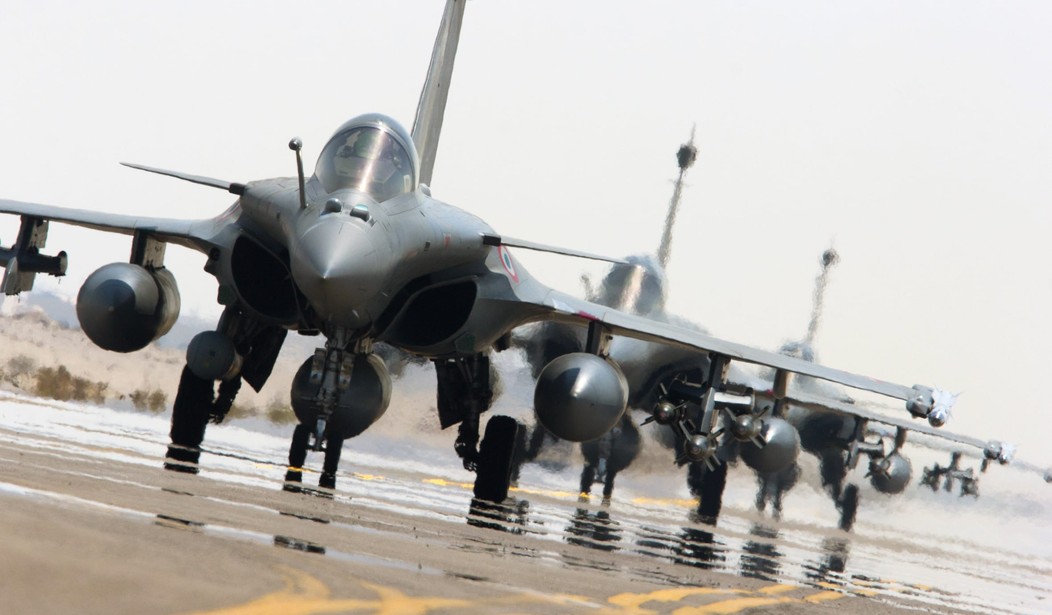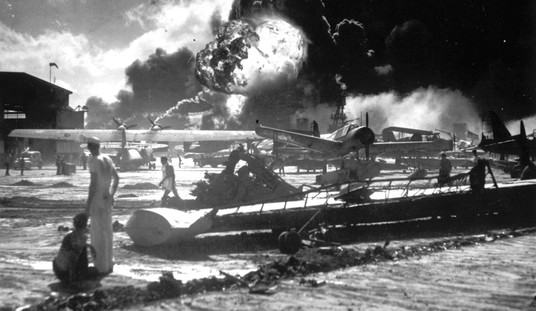Dany Shoham, a top Israeli expert on chemical and biological warfare, has written a truly alarming overview of ISIS’s progress on weapons of mass destruction (WMD).
ISIS, Shoham notes, is “an even more brutal and radical group than al-Qaida” that “does not display any degree of morality whatsoever and does not fear the consequences of its deeds”; its “extreme…nature indicates that it would not hesitate to use any means to achieve its goals.”
ISIS, in other words, is exactly the kind of group you wouldn’t want to be in possession of WMD. But it already is — and its WMD capacities are growing all the time.
No further proof is needed as to whether ISIS would use these weapons — it already has. Shoham gives a spate of examples, such as this one from around September 2014: “ISIS insurgents surrounded hundreds of Iraqi soldiers in the Saqlawiyah district of northern Fallujah, and used chlorine gas to suffocate them before detonating a car bomb. This resulted in the death of 300 Iraqi soldiers.”
Or: “This past August, ISIS launched 45 120mm-mortar shells tipped with mustard warheads against the Kurds in Makhmour, Iraq, and the effects included burns, blisters, severe damage to the eyes, respiratory system, and internal organs.”
How is ISIS getting a hold of this stuff? In June 2014, Shoham notes, the group took over “the huge Muthanna State Establishment, the main Iraqi chemical weapons facility dating back to [Saddam Hussein’s regime].” Around that time, it also “captured approximately 40kg of uranium compounds at Mosul University.”
Does ISIS itself have the expertise to develop its WMD? No — but it brings in “Iraqi and Syrian scientists who are currently assisting the development of chemical weapons, particularly nerve and mustard gas. Foreign experts came from Chechnya and Southeast Asia as well.”
While ISIS, Shoham says, is very unlikely to get hold of a nuclear bomb, it is highly likely to “acquire further chemical agents, and seek to obtain biological and radiological agents for the first time…”
As for getting the toxic material to target populations, ISIS “could capture and use agricultural spraying airplanes or unmanned aerial vehicles. ISIS could also infect individuals with pathogens found in civilian facilities, and let them roam freely among the public and across borders as rudimentary dispersal devices.”
Such prospects are even scarier in light of ISIS’s great skill at making forged passports and Western governments’ eagerness to admit large numbers of unvettable Muslim immigrants into their countries.
As Shoham sums up: “An attack could occur anywhere across the globe…. Only an incapacitating blow against the group will remove this threat.”
What are the chances of such an incapacitating blow? Isn’t ISIS already being driven back in Iraq and Syria?
Not so much, as the Wall Street Journal’s Matthew Dalton clarifies, noting that “the size of its self-declared caliphate in Iraq and Syria [has] diminished only marginally — and at huge cost to its enemies.”
While driven back in the course of 2015 from Kobani in Syria and from Tikrit, Beiji, and Sinjar (and now possibly Ramadi) in Iraq, “with each loss…Islamic State displayed formidable strength, holding off overwhelming numbers of attackers for weeks. It inflicted disproportionate casualties on its enemies and never yielded ground without facing a barrage of coalition missiles.”
And while “the U.S. estimates that American and allied airstrikes during a 16-month military campaign killed more than 20,000 Islamic State fighters…U.S. officials also estimate the…group’s recruitment of foreign fighters doubled in that time period, allowing it to establish a presence in some 30 countries.”
That, along with its growing WMD capability, utter ruthlessness, and ability to withstand offensives, is the other reason the ISIS threat is critical and urgent — the group is metastasizing. Soon it may no longer be even theoretically possible to defeat and destroy these jihadists just by attacking them in Iraq and Syria.
In addition to Sinai, where its branch is believed to have shot down a Russian airliner, and Libya, where it’s rapidly gaining a foothold, ISIS is now setting up shop in Afghanistan.
As the Associated Press reports, the group has taken hold of four districts of Nangarhar province and is “now trying to consolidate links to the mothership — the so-called ‘caliphate’…in Syria and Iraq…”
Residents who have fled the new ISIS domain in Nangarhar “say [its] ‘reign of terror’ there includes extortion, evictions, arbitrary imprisonment and forced marriage for young women. Beheadings and killings with ‘buried bombs’…are filmed and posted on social media…” So far, about 170,000 people have fled or been expelled.
And while the Taliban in Afghanistan still far outnumbers ISIS, there’s a flow of fighters from the former to the latter — to the extent that the Pentagon now calls ISIS an “emergent competitor to other violent extremist groups that have traditionally operated in Afghanistan.”
I’ve written elsewhere that ISIS shouldn’t be allowed to overshadow the Iranian threat. But while the mullahs are driven by an apocalyptic Shiite ideology no less “crazy” than ISIS’s goal of a global caliphate, Iran is a country with multiple concerns, currently bogged down in Syria, and capable of biding its time on its way to a nuclear arsenal.
In comparison, ISIS — whose latest reported atrocity appears to be organ harvesting — is a group on the up-and-up, as seen in the recent spate of attacks in Ankara, Beirut, Sinai, Paris, and San Bernardino, and is obviously aiming for further and more deadly attacks.
Unfortunately, the most likely scenario is that a truly catastrophic attack, probably with WMD, will have to occur before the West and potential Arab allies become truly militarily serious about ISIS. Hopefully, ISIS won’t have spread to too many places by then.









Join the conversation as a VIP Member